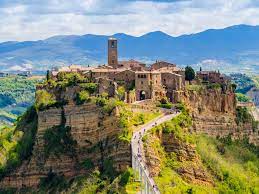Tourism has changed, and this is also evident in Italy, with travellers increasingly seeking out unique places off the beaten track.
Most tourism tends to be concentrated in just 1% of the country: art cities such as Florence, Rome, Venice and Milan, or cities renowned for their cuisine, like Bologna and Naples, or the most popular Italian seaside destinations.
Yet according to Coldiretti/Ixè data, 2023 saw a rise in the number of stays in Italian small villages, with 72% of Italian tourists choosing one of the more than 5.000 villages in their home country as their holiday destination; this is indicative of the growing appeal of gentle, sustainable tourism. These delightful villages scattered throughout Italy, from North to South, offer authentic experiences of tradition, culture and history, and are increasingly accessible even without a car.
Thanks to the extensive Trenitalia rail network, the train is an ideal, sustainable way to discover these hidden gems. This is an aspect especially appreciated by younger tourists, who are very environmentally aware.
One of the most appealing of the services offered in Italian villages is the opportunity to stay in historical dwellings: with demand up by more than 80 per cent compared to 2019, these characteristic homes are the icing on the cake of an unforgettable holiday, far removed from the chaos and crowds encountered in the big cities.
From Sicily to Liguria: a fairytale itinerary through Italian villages - A voyage of discovery through these little gems could take us the length and breadth of Italy, because villages account for almost 70% of all the municipalities in the country. Each of these numerous small towns and villages encompasses history and tradition, as well as fine food, wine and craftsmanship, and they’re all just waiting to be discovered and experienced along with True Italian Experience, a hub that offers bespoke experiences for every type of traveller, with guided tours, cooking classes, craftsmanship lessons and much more.
One example is Cefalù, a Sicilian gem declared a UNESCO World Heritage Site in 2015, with its crystal-clear waters and an Old Town built almost entirely in limestone: an unforgettable destination, enriched by the Arab-Norman details of the architecture. In mainland Italy, the Puglia region awaits, with Alberobello, a village known throughout the world for its characteristic trulli dwellings, while visitors to Calabria can explore places like Tropea and Pizzo Calabro.
And when it comes to villages, Umbria and the Tuscia area are hard to beat, with their little mediaeval hamlets and castles dotted amid the hills. A must is Castiglione del Lago, listed among the ‘Borghi più belli d'Italia' (Italy's most beautiful villages) and surrounded by evocative mediaeval walls.
Heading north from there lies Tuscany, scattered with a wealth of small villages looking onto the Tyrrhenian Sea: Orbetello is just one of the beautiful destinations in the region. Finally, the Cinque Terre area in Liguria is not to be missed.
Vernazza, overlooking the sea, and with a population of 738, is considered one of the most beautiful villages in Italy due to the colourful façades of the houses.












